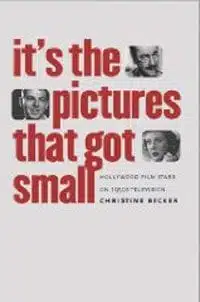
In 1946, Hollywood released almost 400 feature films, generating annual profits of $120 million, and 90 million Americans went to the movies every week. Television was a new competitor on the scene but only .02 percent of American households owned a set and Daryl F. Zanuck, head of the 20th Century Fox studio, was confident that television offered no serious competition to the movies because “People will soon get tired of staring at a plywood box every night.”
Zanuck was hugely successful as a movie producer, but he wasn’t much of a prophet. Just one decade later, 72 percent of American households had television sets, annual movie studio profits had plunged to $30 million, and only 46 million Americans attended movies on a weekly basis. Coupled with the Paramount Decree of 1948, a Supreme Court decision which outlawed the vertical integration of the studio system, rapid adoption of television by American consumers forced major changes in the movie business.
Some trace the decline of American film to the corrupting influence of television, which cheapened American taste and favored the fortune of small talents who couldn’t cut it in the movie business, but like most Golden Age myths this formulation is an oversimplification of a complicated history. Christine Becker examines, and to a large degree lays to rest, this myth in her thoroughly researched and engagingly written history of the interplay between television and the movie industry in the early years: It’s the Pictures That Got Small: Hollywood Film Stars on 1950s Television.
The title is particularly apt, recalling this exchange between out-of-work writer Joe Gillis and aging silent film star Norma Desmond in Billy Wilder’s Sunset Boulevard:
Joe Gillis: “You’re Norma Desmond. You used to be in silent pictures. You used to be big.”
Norma Desmond: “I am big. It’s the pictures that got small.”
Popularity is a fickle mistress, and just as some silent stars and directors were left behind by the advent of sound pictures and the accompanying changes in cinematic style, so were the careers of some film actors hastened to a premature end by the decline of the Hollywood studio system. But there’s a flip side to the story: as soundies ushered in a new generation of film stars, so some actors found greater success in the ’50s than they might ever have enjoyed under the old system.
This was true at both the top and bottom of the food chain: established stars such as Jimmy Stewart and James Cagney were able to take advantage of their new freedom to act in a greater diversity of roles while supporting or bit players such as Faye Emerson and Dinah Shore capitalized on their ability to meet the specific demands of television and enjoyed greater success on the small screen than they ever experienced on the large.
Contrary to popular belief, major film stars also appeared on television even in the early years, although more frequently in self-contained episodes of anthology programs (some of which featured adaptations of popular movies or stage plays) or as guest stars rather than as regular cast members of weekly series programs. In a single two-week period in April 1955, for example, Americans could watch all of the following film stars in the comfort of their living rooms, courtesy of television: Ronald Reagan and Jimmy Stewart on General Electric Theater, James Mason and Claire Trevor on Lux Video Theater, Rock Hudson and Cornel Wilde as guest starts on I Love Lucy, Judy Holliday and Frank Sinatra on the special Kaleidoscope, James Cagney on The Ed Sullivan Show, and Gary Merrill, Groucho Marx, Lon Chaney, Jr., Claudette Colbert, Charles Boyer, Ray Milland, and Ann Sothern in various other programs.
People in the movie business may have looked down upon television as a lesser medium (an initially justified attitude, bearing in mind that film was a mature medium while television was still inventing itself), but they were not too good to engage in television production themselves. It’s easy to romanticize Hollywood, particularly when viewed through a haze of nostalgia, but it’s also foolish: the major studios existed primarily for the purpose of making money and lots of it, so once the studio heads realized television was not going away (and that their customers were not going to come back) they got into that game as well.
Smaller studios such as Columbia were the first to become involved in television, but by the late ’50s majors such as 20th Century Fox and Warner Brothers were also involved. Eventually the movie studios came to control most of the television industry, which paradoxically led to a decline in the number of movie stars appearing on television as talent began to be cultivated separately for the two media.
Based on extensive archival research and amply documented, It’s the Pictures That Got Small qualifies both as a contribution to the scholarly literature and as a general-interest book which is fun to read and would not be out of place in your beach bag. It includes an extensive bibliography and endnotes and four appendices documenting the appearances of established film stars on television programs.
